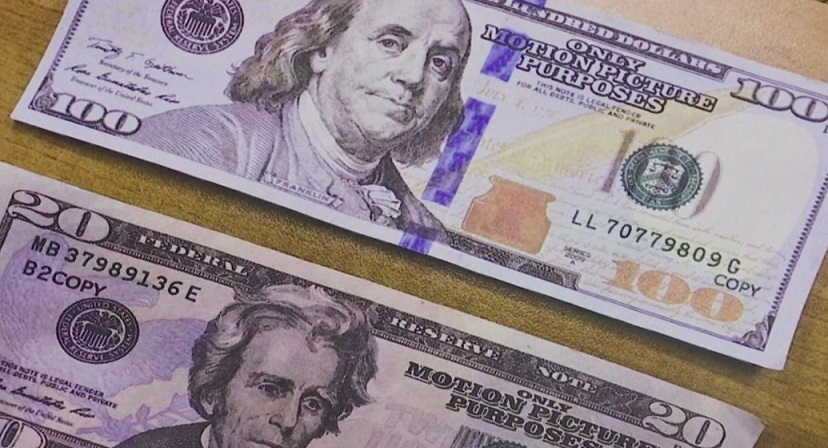Counterfeit Money: How to Spot Fake Bills
Nowadays, it's getting harder to spot a fake bill, which is why many retail outlets are investing in the best money counter machines with counterfeit detection options.
However, in addition to using money counters, there are other ways that retailers can use to tell if a bill is authentic or not.
And considering that fake bills cause huge financial losses to businesses, it doesn't hurt to be prepared when it comes to counterfeit money.
So, here are a few more methods you can use to spot fake money, which will also help you reduce losses caused by fake bills in your business.

1. Feel the Bill
If you have experience handling lots of money, you'll probably identify a fake bill just by feeling its texture.
But even if you don't have much experience with cash, the texture of an authentic banknote is different from the texture of ordinary paper.
Banknotes are made from a special paper and have raised paint. This raised paint makes authentic bills feel slightly rough when touched, something that's lacking in fake currency.
2. Compare the Bill to an Authentic One
If the bill doesn't feel right, you can put it side by side with an authentic bill of the same denomination.
Remember, the aim is to look for differences, not similarities. If you notice even one difference, the bill is probably counterfeit.
3. Look Out For Security Features
All authentic bills have notable security features that are very hard to fake. These features are explained below.
Watermarks - The watermarks is a security feature embedded on the right side of an authentic bill. By holding the bill up to a light, you'll spot the watermark on the right side of the bill. The watermark should be visible from both sides of the banknote. If the watermark is a face, it should be an exact match of the face on the bill.
Security thread - Just like the watermark, the security thread should only be visible when you hold the banknote to the light. The security thread is a thin embedded strip that runs from top to bottom on the bill's face. The strip is on the right of the portrait in $10 and $50 notes, and on the left of the portrait on the $100, $20, and $5 bills. The new $100 note has an added security ribbon that's woven into the paper. Counterfeiters cannot duplicate this 3-D ribbon making it one of the sure ways to determine the authenticity of a $100 banknote.
Color shifting ink – All 10, 20, 50, and 100 authentic dollar bills have ink that tends to change color when you tilt the bill. This feature is found on the right-hand corner of these bills, and you'll observe that the color shifts from green to black or from copper to green when the banknote is tilted.
Microprinting – On an authentic bill's security thread, there is visible microprinting. The printing on the note's security strip will have the word USA followed by the bill's denomination. E.g., the $10 bill will have the words 'USA TEN' written on the security strip. The $50 and the $100 will have 'USA 50' and 'USA 100' written on the strip, respectively.
Ultraviolet glow – When you hold an authentic bill to ultraviolet light, you'll see the security thread glow. The $5 strip glows blue, the $10 thread glows orange, while the $20, $50, and $100 strips glow green, yellow, and pink, respectively.
Fine printing - Authentic bills have fine printing, as they're made of die-cut printing plates that create impressive fine lines. This feature is hard to duplicate, and counterfeit bills often have blurred printing or text, especially at the borders.
Serial numbers - Checking the note's serial number and comparing it to the series year printed at the front of the note can also help you detect a fake bill. An authentic bill's serial number prefix will always correspond to its series year. The serial numbers first letter and their corresponding series years are as below.
- A-1996
- B-1999
- C-2001
- D-2003
- E - 2004
- F-2003A
- G-2004A
- H-2006
- I-2006
- J-2009
- K-2006A
- L-2009A
- M-2013
- N-2017
- P-2017A
In closing, you can use the above features to determine if a bill is authentic or fake.
If you notice that you've received a counterfeit bill, don't put yourself in danger by trying to take action against the passer. Rather, note down the details of the customer and don't return the bill to them. Ensure you write your initials and the date on the fake bill's border and surrender it to the police or a Secret Service agent.
 How to identify counterfeit money, real money from the State Bank you should know to not be fooled
How to identify counterfeit money, real money from the State Bank you should know to not be fooled How to accurately distinguish iPhone 6 or iPhone 6s?
How to accurately distinguish iPhone 6 or iPhone 6s? Top 7 most easily counterfeited foods today
Top 7 most easily counterfeited foods today Instructions on how to distinguish between genuine and counterfeit smartphones
Instructions on how to distinguish between genuine and counterfeit smartphones Fake CPUs Are on the Rise: Here's How to Spot Them!
Fake CPUs Are on the Rise: Here's How to Spot Them!